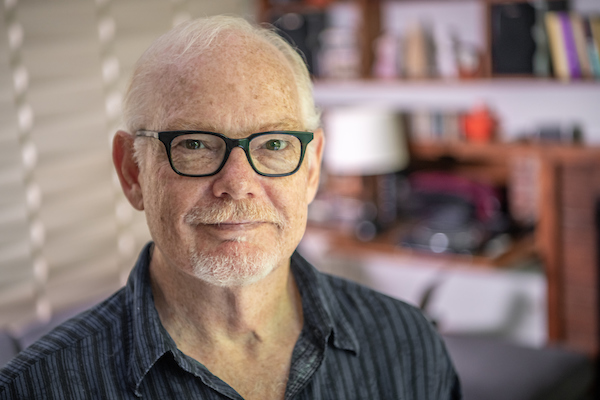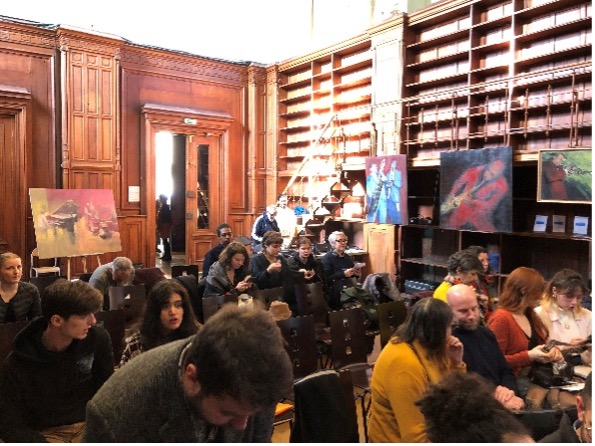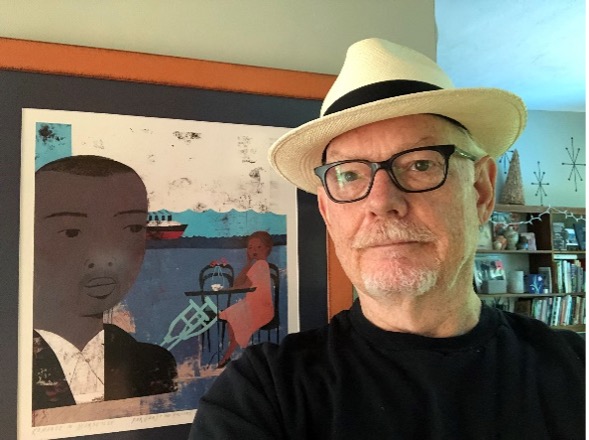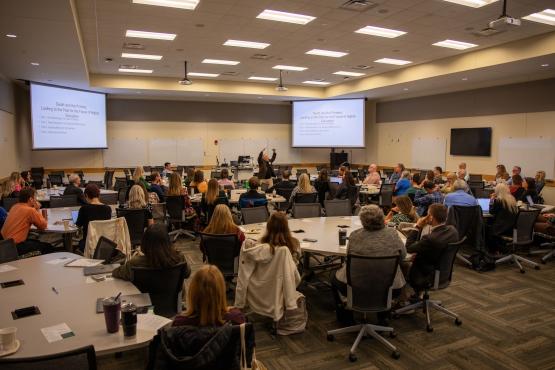
“[McKay] was just telling a story about the people he knew who had not been written about.”
Gary Edward Holcomb, professor and chair of Ohio University’s African American Studies Department, is describing “Romance in Marseille,” a novel by Jamaican-born author Claude McKay. McKay was a significant figure in the Harlem Renaissance, an era that celebrated Black art and Black identity. The novel was written 80 years ago and was published with Holcomb’s help in 2020.
If not for the work of Dr. Holcomb and his co-editor William J. Maxwell, the manuscript may have remained in the archives, only available to those who sought it out. The novel features controversial topics and identities that would have been considered taboo, or at least highly unusual, for their time. Those themes and McKay’s own frustrations contributed to the delay in the novel’s publication.
“He kind of lost faith in it.” Holcomb said. “He says in his letter as well ‘I'm not sure if I'm able to pull this off’. Writing about this disabled African character, West African character, [when] all of his male characters up until then had been robust and healthy,” Holcomb continued. “[McKay] himself was ill most of his adult life, so he was drawing from his own experience.”
McKay published several novels and poetry collections throughout his life, but what sets this novel apart from others is its inclusion of an especially diverse cast of characters, including a disabled Black protagonist and members of the LGBTQ+ community. The novel also addresses topics such as ableism, politics, and Black identity across the Black diaspora.
This book comes along from almost a century ago and tells us what we should be doing now in modern day.
Holcomb first learned about the manuscript in the 1990s when he came across a reference to it in a McKay biography. Intrigued, he searched for the book in local libraries, but could find no trace of it.
“[I’d] heard his name, but I didn't know much about him. I started wanting to write a dissertation on Caribbean writers. And so I started reading about McKay and ultimately wanted to write about him.”
After attending a conference on the Harlem Renaissance early in his career, Holcomb shifted from Caribbean Studies to African American Literary Studies. He explains that he did not intentionally focus on Claude McKay, but that the process of learning more about McKay and his work came naturally.
After learning about the manuscript and being unable to find it in local libraries, Holcomb traveled to New York’s Schomburg Center for Research in Black Culture, where one of two copies of “Romance in Marseille” was held.
“And I looked at the book and I went, this thing is amazing,” Holcomb says. “You know, someone should publish this. I thought I might try.”
It wasn’t until several years later that Holcomb decided to come back to “Romance in Marseille” and finally pursue its publication alongside his co-editor. Despite several setbacks, “Romance in Marseille” was eventually published in 2020.

Dr. Gary Holcomb, chair of the African American Studies Department, unearthed the "Romance in Marseille" manuscript and persisted for years to see it to publication.
One of Holcomb’s favorite reviews of “Romance in Marseille” came from the Jamaican newspaper The Gleaner. The paper picked up the news of the novel’s publication and felt that its content could aid in dismantling any remaining anti-LGBTQ+ laws and targeted behaviors.
“I had never thought about that,” Holcomb said. “That a novel could come along from the 1930s and people would say ‘we’ve got to use this as a weapon against the attack on LGBTQ people in this country’. I just thought these publishers that have this major newspaper in Jamaica are saying 'this book comes along from almost a century ago and tells us what we should be doing now in modern day.'”
The now-published novel has been well-received by students as well. Since its publication, Holcomb has integrated “Romance in Marseille” into his African American Studies courses. Students learn about McKay and the history of the book’s publication in the novel’s introduction, written by Dr. Holcomb himself. The course is often cited as a favorite among Holcomb’s students.

Holcomb traveled to Morocco, where McKay wrote parts of "Romance in Marseille."

Holcomb's view from a presentation at a McKay conference in Marseille.
Recently, Holcomb visited Marseille and Tangier, Morocco, where McKay spent time when he was writing the novel. Holcomb was invited to present about McKay’s personal letters at a conference and took the opportunity to walk in the author’s footsteps.
“I wanted to go hunt down a few things that McKay wrote about,” he said. “I can see why he liked these places so much. He liked to be in places that were not bougie, and everything is normal, and everybody's following the rules all the time.”
“Romance in Marseille” serves as an important reminder that just because people from certain communities were not often talked about does not mean that they didn’t exist.
To keep his story alive, Holcomb and a co-writer will be publishing a book of McKay’s letters that will be available in 2025. The novel will continue to be taught in classrooms; McKay’s impact on the literary world is far from over.


